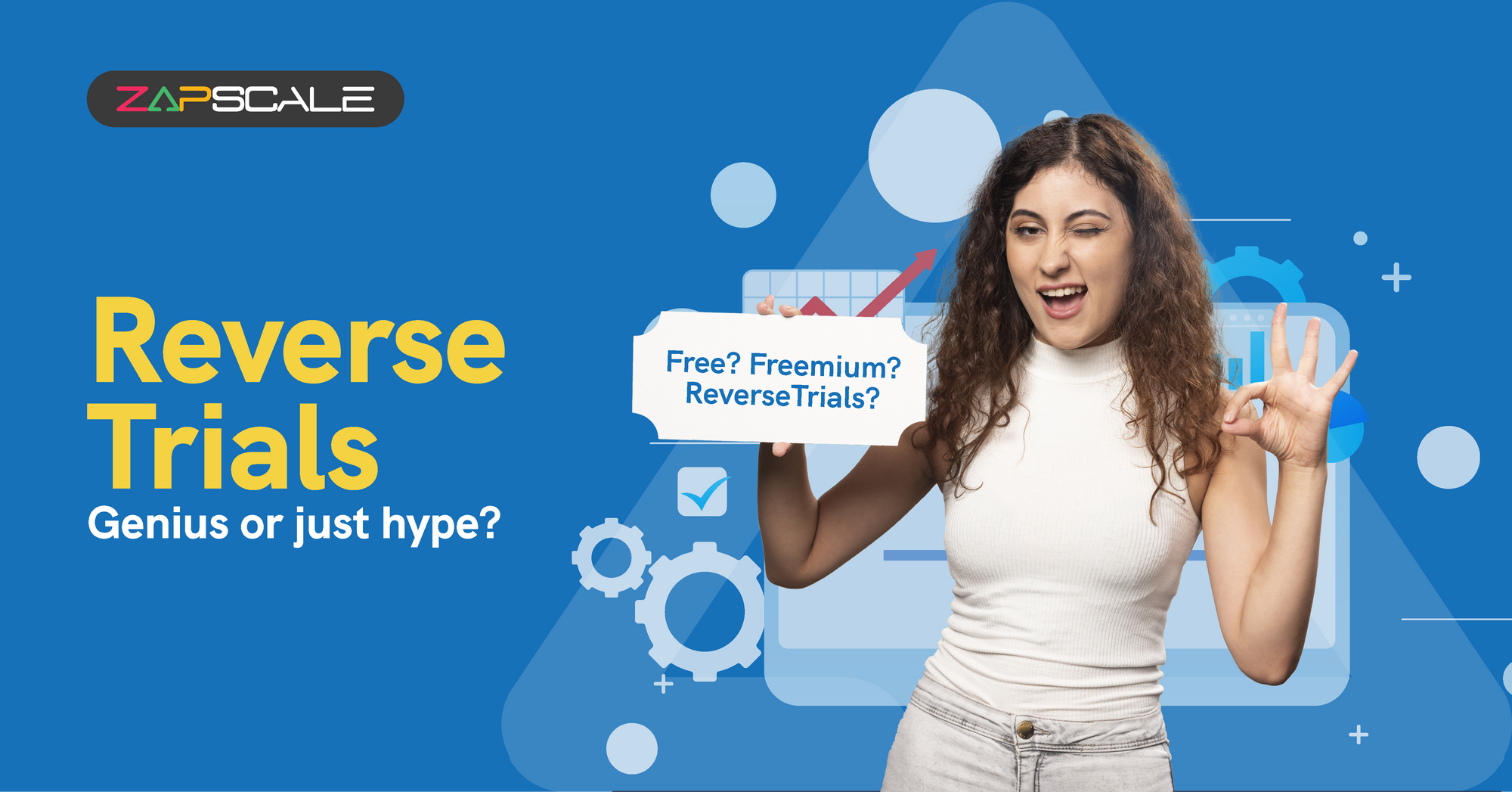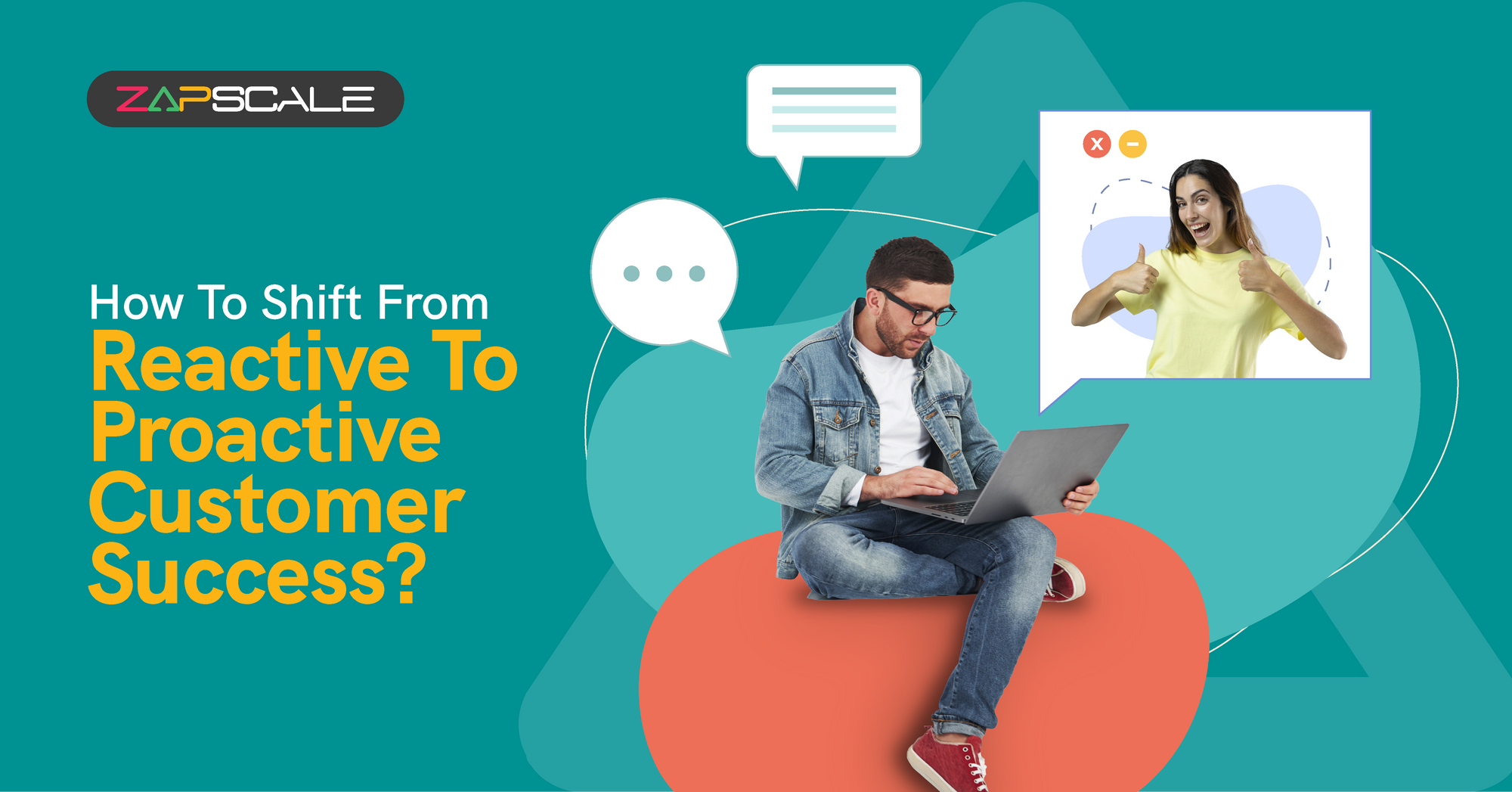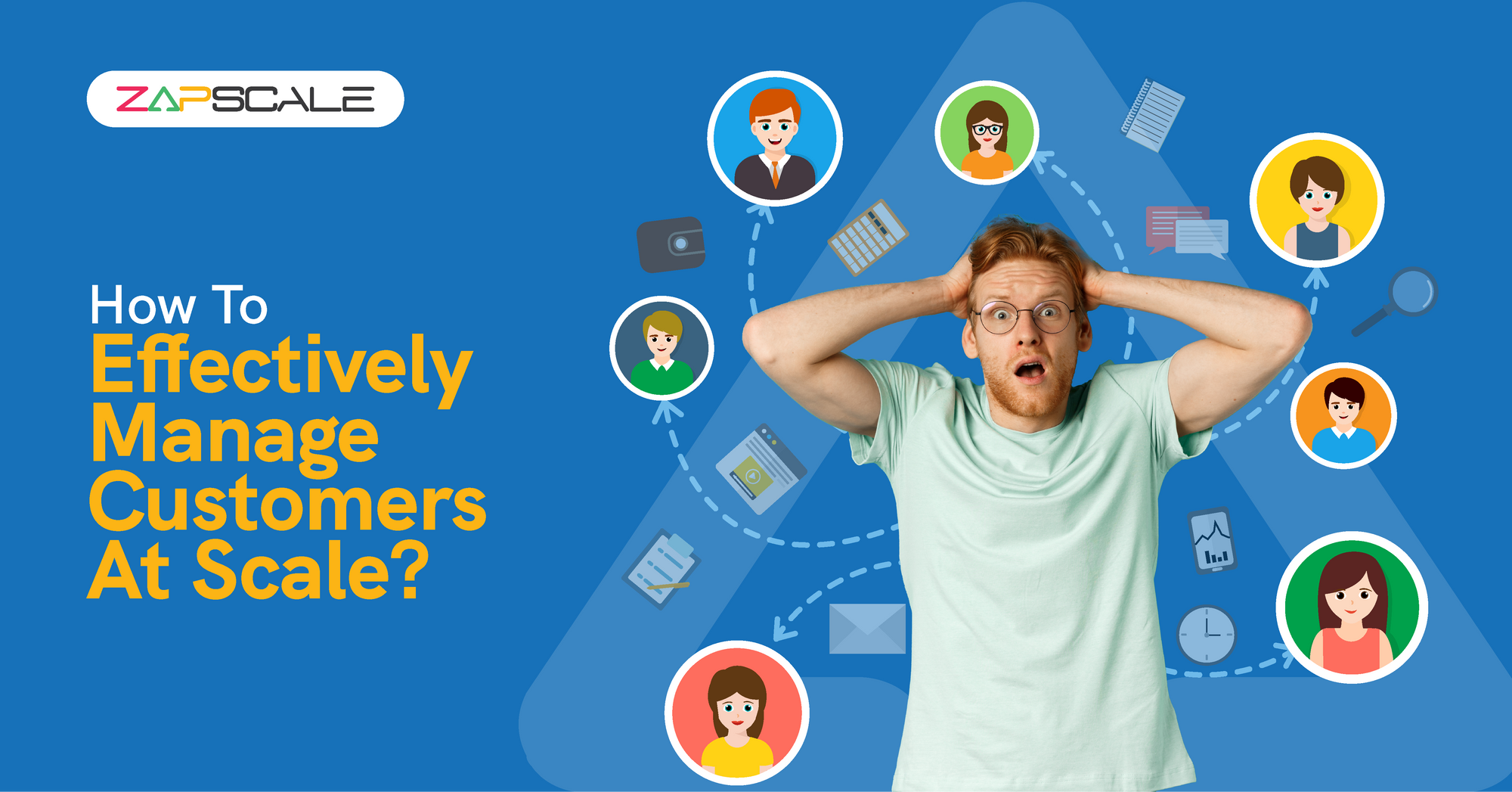CATEGORY > Customer Success Management
Exploring The Various Stages Of The Customer Success Lifecycle
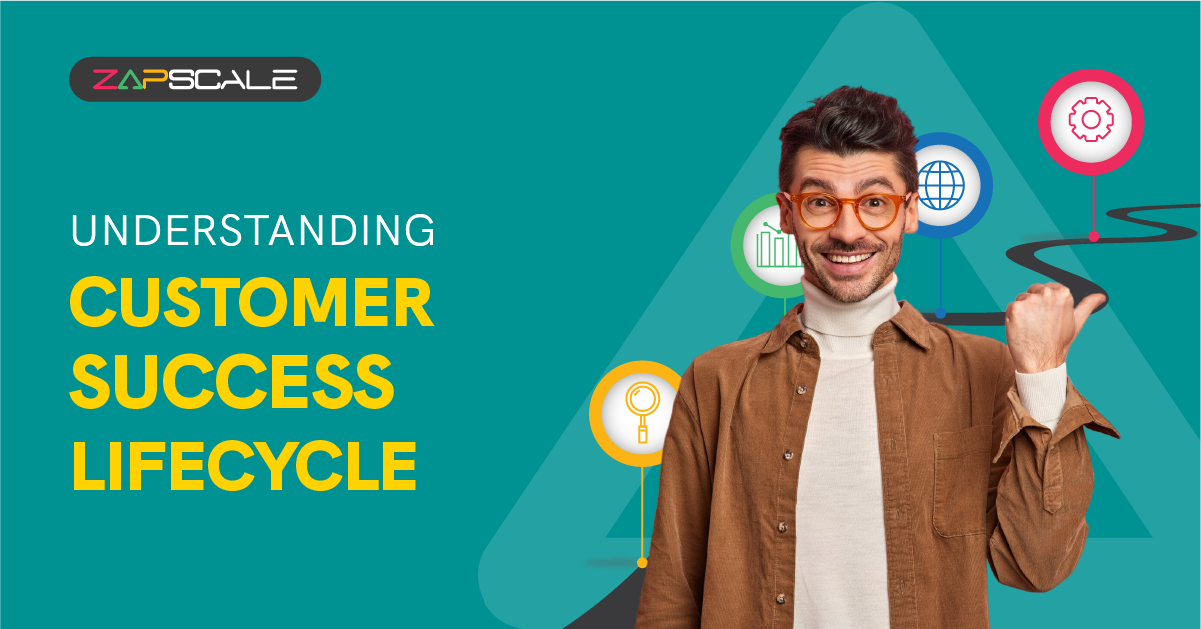
The customer success lifecycle is a customer-centric approach that focuses on creating and delivering value to your customers throughout their entire journey with your product or service.
It starts with understanding their needs and goals, then guides them through onboarding, product adoption, value realization, and potential expansion, with the ultimate aim of building long-term, successful relationships.
What Are The Key Stages Of The Customer Success Lifecycle?
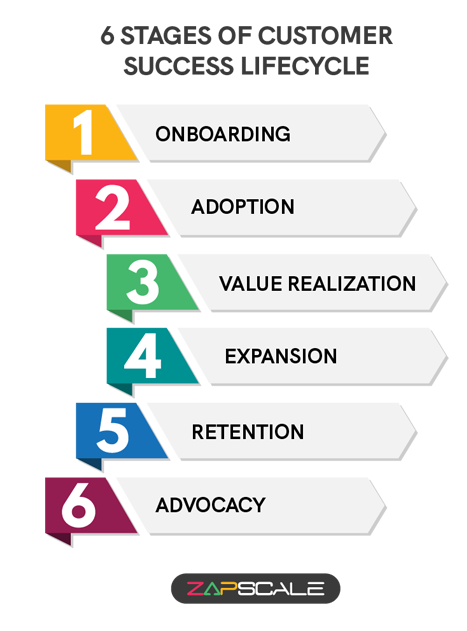
Stage 1: Onboarding
In the customer success lifecycle, onboarding is the crucial first stage where you get new customers up and running effectively with your product or service.
It's a critical phase that sets the tone for the entire customer relationship.
The primary objective of onboarding is to ensure a smooth and successful first experience for your new customers.
Here's a breakdown of what a successful onboarding aims to achieve:
a. Reduce Time-To-Value
Help customers quickly understand the core functionalities and begin achieving their desired outcomes with your product.
b. Increase Product Adoption
Encourage customers to actively use and explore the features of your product or service.
c. Boost Customer Satisfaction
Create a positive first impression and build trust with your new customers.
d. Minimize Churn
Reduce the risk of customers abandoning your product due to initial confusion or frustration.
Key Onboarding Activities?
There are several key activities involved in a successful onboarding process:
- Offer comprehensive user manuals, tutorials, and knowledge base articles that are easily accessible and understandable for your customers.
- Consider offering personalized walkthroughs or one-on-one training sessions to address specific customer needs and questions.
- Streamline account creation, configuration, and data migration to minimize friction for new customers.
- Create informative and engaging welcome emails, videos, or in-app messages to guide customers through the initial steps.
- Offer readily available support channels and resources to address any concerns or questions customers may have during onboarding.
- Set clear and achievable milestones to help customers track their progress and celebrate their initial wins with your product.
By implementing these activities effectively, you can create a smooth and successful onboarding experience that sets your customers up for long-term success with your product or service.
Stage 2: Adoption
Adoption refers to the second stage where you focus on encouraging customers to actively use and explore the full potential of your product or service.

It follows a successful onboarding experience and is crucial for maximizing customer value.
The primary objective of the adoption stage is to increase product usage and engagement. Here's a breakdown of what a successful adoption stage aims to achieve:
a. Drive Feature Exploration
Motivate customers to go beyond basic functionalities and discover the full range of features your product offers.
b. Increase Product Value Perception
Help customers understand how different features can address their specific needs and goals.
c. Boost Customer Confidence
Empower customers to use your product effectively and independently, building their confidence and satisfaction.
d. Reduce Support Dependence
As customers become more familiar with the product, they'll need less reliance on support resources.
Key Adoption Activities
There are several key activities involved in promoting successful product adoption:
- Utilize targeted email campaigns, push notifications, or in-app prompts to highlight valuable features and usage tips.
- Develop comprehensive tutorials, knowledge-based articles, and video guides that showcase advanced features and use cases.
- Consider implementing gamification elements like badges, points, or leaderboards to encourage exploration and engagement.
- Foster a community forum or user group where customers can share best practices, ask questions, and learn from each other.
- Showcase how other customers are using your product to achieve success, inspiring new users to explore its capabilities.
- Utilize user data and analytics to recommend relevant features and resources based on individual customer needs.
- Host interactive webinars or live demos to provide in-depth product walkthroughs and answer user questions in real-time.
- Track user behavior data to identify areas where engagement is low and tailor adoption efforts accordingly.
By implementing these activities strategically, you can motivate customers to actively engage with your product, leading to increased customer satisfaction, higher value realization, and ultimately, a strong foundation for long-term customer relationships.
Stage 3: Value Realization
In the customer success lifecycle, value realization is the crucial third stage where you ensure customers achieve the specific goals and outcomes they set out to achieve with your product or service.
It builds upon a successful onboarding and product adoption phase and is the heart of the customer success journey.
This stage focuses on:
a. Meeting Customer Goals
Helping customers achieve the specific objectives they outlined when they signed up for your product.
b. Quantifying Value Delivered
Demonstrating the measurable improvements or positive outcomes your product has brought to their business.
c. Increasing Customer Satisfaction
By delivering on their goals, you solidify customer satisfaction and build trust in the long run.
d. Reducing Churn Risk
Satisfied customers who are achieving value are less likely to churn and discontinue using your product.

Key Value Realization Activities
There are several key activities involved in ensuring successful value realization for your customers:
- Implement structured customer success programs that track customer progress toward their goals and provide ongoing support.
- Regularly check in with customers to understand their progress, address any challenges they might be facing, and ensure they're on track to achieve their desired outcomes.
- Identify and proactively address any obstacles or roadblocks that might hinder customers from achieving their goals with your product.
- Quantify the positive impact your product has had on the customer's business through reports, data analysis, or customer success stories.
- Track key performance indicators (KPIs) that are directly tied to the customer's specific goals, providing clear evidence of value delivered.
- Establish feedback channels to gather customer input on their experience and identify areas where you can further improve their journey to value realization.
By implementing these activities effectively, you can go beyond simply selling a product and become a trusted partner in your customer's success journey.
This fosters long-term customer loyalty, increases customer lifetime value , and ultimately positions your business for sustainable growth.
Stage 4: Expansion
In the customer success lifecycle, expansion is the fourth stage that focuses on encouraging customers to increase their usage or upgrade their plans to maximize the value they derive from your product or service.
It follows a successful value realization stage and can be a significant driver of revenue growth.
The primary objective of the expansion stage is to enhance customer lifetime value.
Here's a breakdown of what a successful expansion stage aims to achieve:
a. Increase Revenue
Motivate customers to invest more in your product or service through upsells and cross-sells.
b. Deeper Customer Relationships
Expand on the existing customer relationship by fostering a strategic partnership focused on their continued growth.
c. Unlock New Opportunities
Identify opportunities for customers to leverage advanced features or functionalities that can further address their evolving needs.
d. Reduce Customer Churn
Highly satisfied customers who see the potential for further value are less likely to churn.
Key Expansion Activities
There are several key activities involved in driving successful customer expansion:
- Analyze customer usage data and business needs to identify areas where they could benefit from additional features or higher tiers of your product or service.
- Highlight the capabilities of advanced features or higher tiers through targeted communication, product demos, or personalized consultations.
- Quantify the potential return on investment (ROI) customers can expect by upgrading their plan or adding new features, focusing on metrics relevant to their business goals.
- Showcase success stories of existing customers who have benefited from expanding their usage or upgrading their plans.
- Implement loyalty programs that reward customers for increased engagement and encourage them to move up through different tiers with increased benefits.
- Offer exclusive content, training, or support resources to customers who upgrade to higher tiers, creating additional value for their investment.
- Provide early access to new features or product updates for high-value customers, fostering a sense of exclusivity and partnership.
By providing clear value propositions and demonstrating the potential benefits, you can encourage customers to invest more in your product or service, leading to a win-win situation for both parties.
Stage 5: Retention
In the customer success lifecycle, retention is the critical fifth stage that focuses on encouraging customers to continue using your product or service and maintain a positive relationship with your brand.
The primary objective of the retention stage is to minimize customer churn (the rate at which customers stop using your product or service).
Here's a breakdown of what a successful retention stage aims to achieve:
a. Boost Customer Lifetime Value
By retaining customers for longer, you have the opportunity to generate more revenue from them over their lifetime.
b. Maintain Positive Customer Relationships
Retention focuses on building long-term relationships with customers based on trust, satisfaction, and mutual success.
c. Reduce Customer Acquisition Costs
Retaining existing customers is often more cost-effective than acquiring new ones.
d. Promote Customer Advocacy
Satisfied customers who are retained are more likely to become brand advocates and recommend your product or service to others.
Key Retention Activities
There are several key activities involved in driving successful customer retention:
- Regularly communicate with customers to showcase new features, provide valuable content, and demonstrate your ongoing commitment to their success.
- Be attentive to customer feedback and promptly address any issues or concerns they may have to prevent frustration and churn.
- Implement loyalty programs that reward customers for their continued engagement and incentivize them to stay with your product or service.
- Go the extra mile to deliver exceptional customer service and exceed customer expectations to foster loyalty and positive brand perception.
- Utilize customer health scores to proactively identify at-risk customers and take steps to address their concerns before they churn.
- Foster a strong customer community where users can connect, share best practices, and feel valued as part of a larger ecosystem.
- Offer flexible subscription options and facilitate easy upgrades or downgrades to cater to evolving customer needs.
- For customers who do churn, consider targeted win-back campaigns to address their reasons for leaving and offer incentives for them to return.
By implementing these activities effectively, you can build strong customer relationships, reduce churn, and cultivate a loyal customer base that fuels your business growth in the long run.
Stage 6: Advocacy
In the customer success lifecycle, advocacy is the optional sixth and final stage that focuses on transforming satisfied customers into brand advocates who recommend your product or service to others.
It builds upon a foundation of successful customer experiences throughout the lifecycle and can be a powerful driver of organic growth.
The primary objective of the advocacy stage is to harness the power of word-of-mouth marketing.
Here's a breakdown of what a successful advocacy program aims to achieve:
a. Increases Brand Awareness
Leverage customer endorsements to reach a wider audience and generate brand awareness organically.
b. Enhances Brand Credibility
Positive customer testimonials and recommendations add credibility and social proof to your brand messaging.
c. Reduces Customer Acquisition Costs
Advocacy can attract new customers through trusted sources, lowering customer acquisition costs.
d. Boosts Customer Lifetime Value
Advocates are likelier to remain loyal customers and can influence others to do the same, ultimately increasing CLTV.
Key Advocacy Activities
There are several key activities involved in cultivating a strong customer advocacy program:
- Showcase real-life stories of successful customers who have achieved remarkable results with your product or service.
- Implement referral programs that incentivize existing customers to recommend your product or service to their network.
- Foster genuine relationships with customers based on trust, responsiveness, and a commitment to their success.
- Create a vibrant customer community where advocates can connect, share experiences, and build trust with potential customers.
- Offer early access to new features or product updates to advocates, making them feel valued and giving them exclusive content to share.
- Encourage customer advocates to share positive experiences and recommendations on social media platforms.
- Recognize and appreciate customer advocates for their contributions through awards, badges, or other forms of recognition.
It's important to remember that advocacy should be authentic.
Don't force customers to become advocates. Instead, focus on creating a customer-centric experience that fosters genuine satisfaction and loyalty.
By providing exceptional value throughout the lifecycle, you'll naturally cultivate a base of enthusiastic advocates who are happy to recommend your product or service to others.
Conclusion
Overall, creating a customer success lifecycle is an investment that yields significant returns. It fosters strong customer relationships, boosts revenue, and positions your business for long-term success.
Creating a customer success lifecycle is a strategic investment that gives you significant returns by nurturing customer relationships, boosting revenue, and positioning your business for long-term success.
A well-defined customer success lifecycle enhances the customer experience by providing a frictionless journey, offering targeted support, and proactively addressing potential challenges. This approach not only increases customer retention by reducing churn and improving satisfaction but also strengthens customer relationships through ongoing communication and engagement.
ABOUT THE AUTHOR
Popular from Customer Success Management
Quality Content,
Straight To Your Inbox!
Subscribe for the latest blogs, podcasts, webinars, and events!

Write a Blog
If you have experience in CS and
a flair for writing, we’d love to
feature you.
Write to us on
hello@zapscale.com

